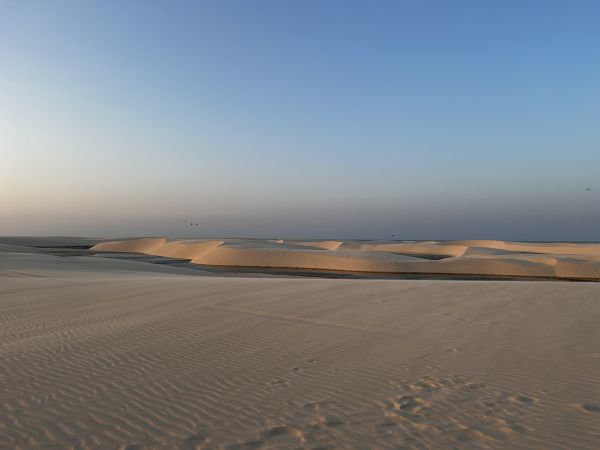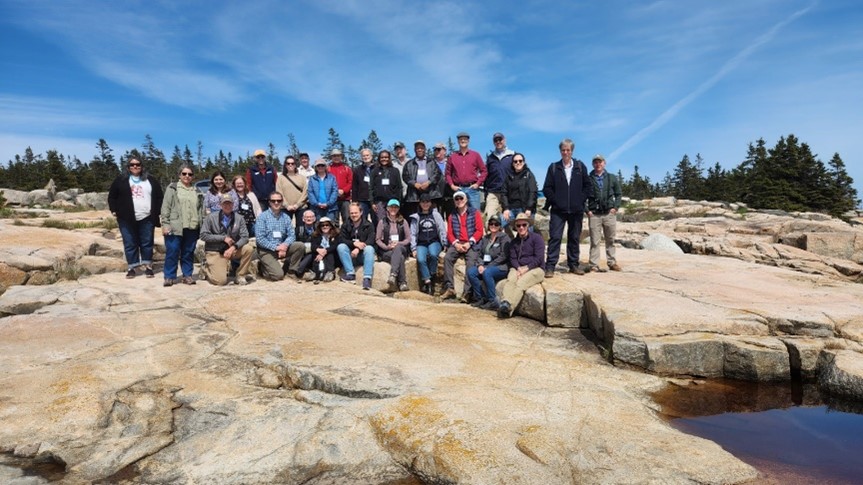IUCN recommends five natural sites, across Europe, South America and Asia and the Pacific, for the World Heritage List
IUCN, the official advisory body on nature to UNESCO’s World Heritage Committee, recommends the addition of four new sites to the prestigious World Heritage List for their outstanding natural value in Brazil, China, France and the UK. IUCN also recommends the extension of an existing serial site along the east coast of China. They are characterised respectively by extensive inland and coastal sand dunes, abundant migratory and endemic species, and globally rare ecosystems. IUCN considers these sites meet the requirements to be declared as of outstanding universal value by the World Heritage Committee, which will meet to decide on new listings in July in India.
This year, IUCN has evaluated 7 nominations - proposals by countries to inscribe new World Heritage sites. The 46th session of the World Heritage Committee will make the final decision during its annual meeting, this year scheduled to take place from the 21 to 31 July in New Delhi, India. IUCN’s advice (including both our recommendations of new sites and monitoring reports of existing sites) form part of a first release of documents today by UNESCO. Further advice, focussing on existing World Heritage sites, will be released later this month. For more information on IUCN's statutory role on World Heritage click here.
Four potential new sites and one extension
Brazil’s Lençóis Maranhenses National Park is a striking landscape of unique beauty shaped by the interplay of climate, oceanography, and geomorphology. The coastal barchan dunes, that meet the Atlantic Ocean via reduced sand beaches, are transformed in the rainy season with the formation of temporary interdunal lakes fed exclusively by rainwater.
The Badain Jaran desert - Towers of Sand and Lakes in China represents an outstanding example of the ongoing evolution of desert landscapes. Covering a vast expanse of almost 800,000 ha, it contains a significant diversity of geological features including an abundance of mega dunes, 144 striking interdunal lakes of a myriad of colours, and large swathes of so called ‘singing sands’.
Representing the most outstanding example of blanket blog ecosystem globally, The Flow Country in the United Kingdom of Great Britain and Northern Ireland, will be the world’s first majority peatland World Heritage site, if inscribed. Reaching extraordinary thicknesses of over eight metres in many places, the site is home to a diversity of blanket bog features found nowhere else on Earth.
In the French Overseas Territory of French Polynesia, Te Henua Enata – Marquesas Islands is a hotspot for terrestrial and marine biodiversity and endemic species. The isolation of this young archipelago has resulted in the presence of 305 plant species and endemism levels all the way down to single mountain peaks on single islands. The site meets the natural criteria according to IUCN’s evaluation, and is also being proposed for its cultural heritage significance.
IUCN also recommends the approval of the extension of the Migratory Bird Sanctuaries along the Coast of Yellow Sea-Bohai Gulf of China World Heritage site to include ten further components. These components are found in the largest intertidal wetland system in the world and represent indispensable hubs for more than 400 species of migratory birds along the East Asian-Australasian Flyway (the most threatened flyway in the world).
Monitoring the state of the world’s most outstanding natural sites
IUCN’s recommendations released today also include monitoring reports on the state of conservation of listed World Heritage sites. IUCN monitors a select number of natural sites each year in conjunction with the UNESCO World Heritage Centre. Within this first release of documents by UNESCO, some of the most well-known and appreciated natural sites are reported from the Great Himalayan National Park Conservation Area in India to the Phoenix Islands Protected Area in Kiribati to the Río Plátano Biosphere Reserve in Honduras.
Sites represented in this cycle of reports continue to face significant threats, including from climate change, infrastructure developments and armed conflicts as well as concerns and allegations of human rights violations.
All IUCN reports and evaluations, alongside other UNESCO documents, can be found at: https://whc.unesco.org/en/sessions/46COM








